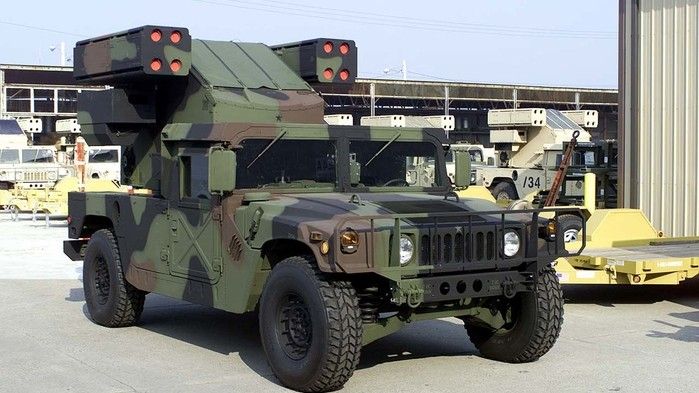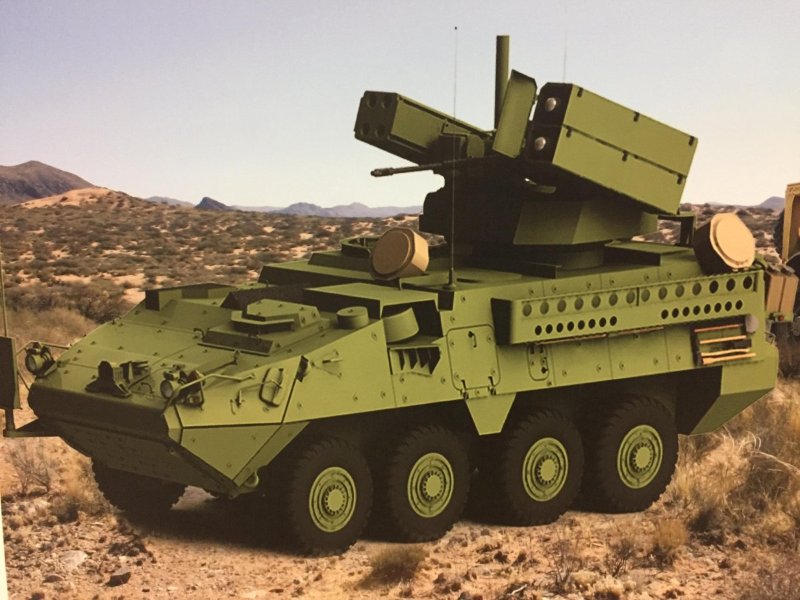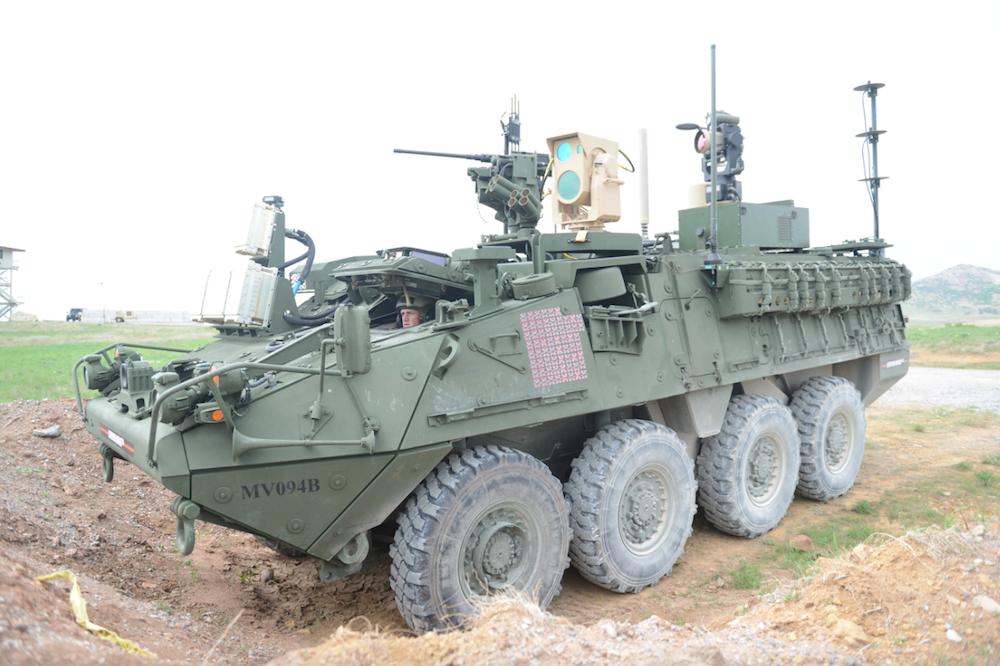Armed Forces
US Army Recovering its Mobile Air Defence Capabilities. What about Poland?

The US Army is treating the extension of the direct air defence capabilities as one of its top priorities. The existing systems would be modernized in parallel to introduction of new solutions. This is done to maintain usability of the legacy solutions in the contemporary battlespace.
The US Army, since the end of the Cold War, has been gradually reducing its air defence capabilities. After the conflicts in Iraq and Afghanistan broke out, the division-level air defence battalions were disbanded. It was assumed that the US military aviation remains capable of delivering air superiority in any circumstances.
Following the Ukrainian and Middle Eastern crises where UAVs (UCAVs included) have been used more extensively, the Americans came to a conclusion that divisions would still need relevant air defence assets. Recovery of the capabilities needs to be done from a scratch. And it is to be done with the use of systems that are considered, even in the US, to be obsolete.
A press release issued by the US Army claims that none of the 10 active US Army divisions had an air defence battalion embedded within its structure in 2017. Several units as such have been and still are a part of the National Guard. Since then, the Americans have managed to form an element as such - the 5th Battalion of the 4th Air Defense Artillery Regiment, stationed in Germany. The unit operates Avenger air defence systems with two quadruple Stinger launchers and a .50-cal. machine gun. The vehicle is also fitted with an optoelectronic target detection and tracking system.
The US Army has recently decided to reintroduce 72 Avenger systems into the inventory. Those systems had previously been withdrawn. Some of those systems have also underwent an upgrade. They currently feature an automatic target lock-on function that uses external data source (usually in a form of the Sentinel radar): slew-to-cue.
Until September 2020 all of the Avenger systems are expected to have this feature embedded on them. During the next stage of the upgrade programme the Avenger systems will also be fitted with new communications suite. This will make it possible to keep them in service until 2031. That is when there will be a chance to replace them all with brand new solutions.
The US Army leadership is perfectly aware of the fact that Avengers are not up to the challenges of the contemporary battlefield, even when the Stinger effector is fitted with a proximity fuse. „Army Air and Missile Defense 2028” document that outlines the plan of developing the US Army air defence assets for the upcoming decade states that Avengers cannot provide sufficient mobility, firepower and survivability to ensure a proper level of protection for the contemporary land forces elements. Thus, it is planned to introduce an entirely new system into the inventory.

Here we are referring to the Maneuver-SHORAD (M-SHORAD) systems. They would be based on the Stryker APC. The first variant, the so called IM-SHORAD system would be fitted with two Hellfire Longbow launchers, four Stinger missiles, 30 mm cannons and 7.62 mm machine guns coupled with a non-kinetic counter-UAS solution.. 144 vehicles of this kind would be delivered to 4 air defence battalions and this is planned to happen until FY2024.
Further units would be equipped with a system of even greater capabilities, fitted with a laser weapons system and new generation anti-aircraft missiles of a greater range.
It is expected that the air defence battalions of the US divisions would use both the M-SHORAD systems (direct protection) and the IFPC Inc-2I systems. The latter is to feature a missile launcher (that is to be complemented with a laser in the future), Sentinel radars and IBCS command suite. It is to be based on heavy duty vehicles. Selection of the missile would take place next year - Iron Dome integrated with the IBCS system (two batteries in existing configuration) have been recently acquired as a part of an urgent operational requirement, however, other solutions may also be considered.
IFPC, besides protecting the land forces from aircraft, helicopters or drones, would also offer an option of being employed against cruise missiles and in a C-RAM role. The system would be used to defend force gathering locations or command points. According to the information released to the public it is also to replace the existing C-RAM system using a land variety of the Phalanx solution.
The system is expected to be less mobile than M-SHORAD, but it is also to offer a much greater firepower. This means that its concept is somewhat close to that of the Polish Narew solution. Patriot squadrons are also going to include IFPC batteries. Thanks to the above, the whole IADS would offer a layered protection.

The US Army is also working on non-kinetic systems. Not only does the above refer to laser systems (that are to become a part of M-SHORAD and IFPC solutions, with the latter to receive a laser of greater power), but also jamming solutions or microwave weapons.
Stinger MANPADS is another complementary air defence asset that is being already introduced in some of the brigades. The US Army command came to a conclusion that portable system should remain available in parallel to the mobile units. In some operational contexts they may turn out to be most effective, as Stinger crews may be scattered among the land elements and work closely with them.
The US Forces are also making efforts to modernize the command system for the mobile air defence assets. Since the 1990s FAAD C2 (Forward Area Air Defense Command and Control) solution has been used in that role. Apart from air defence management, it was also used to coordinate the C-RAM assets and detect the sources of artillery fires, so that a proper counter-battery action could be taken. FAAD C2 also supports the C-UAS activities. It may be used to create the air picture with sensors working with it taken into account.
The FAAD C2 system is expected to undergo continuous upgrades, headed towards integration with the IBCS command system. The latter may be an easy task, as both of the systems mentioned above have been delivered by Northrop Grumman. Recently the US Army has publicized a letter of request concerning new software for the FAAD solution.
Its purpose would be to retain the SHORAD and IM-SHORAD capabilities (as the first tranches of the Strykers would be integrated with FAAD), as well as the capabilities defined as C-RAM and C-UAS and, which is relevant, US Marines land air defences and directed energy weapons systems developed at the research labs of the Air Force. It is clearly visible that FAAD’s purpose is to coordinate joint operations.
The requests also lists the systems with which the new FAAD software would need to be integrated. The list includes the following solutions:
- Avenger;
- Compact Laser Weapon System ;
- Reconfigurable Integrated Weapons Platform (remote control weapons system that may be used in case of mobile air defences);
- Coyote (Raytheon’s C-UAS solution using its own UAVs to physically act against the enemy drones);
- Tactical High-Power Microvawe (microwave beam defence system that could be used in the C-UAS role);
- Land version of the Phalanx CIWS;
- Stinger missile;
- Hellfire missile;
- IBCS air defence management system;
- Improved Sentinel Radar;
- Q-36 and Q-37 Firefinder radars;
- Q-53 radar (replacing the Q-36 and Q-37 systems);
- Multi-Functional Radio Frequency System (this probably refers to a light radar designed by Raytheon);
- RPS-42 and RPS-62 MultiMission Hemispherical Radars capable of supporting C-UAS systems and usable in other roles;
- NightHawk optoelectronic sensor suite;
- Duke EW solution;
- Corian C-UAS system.
The Americans also require the new software to retain backwards compatibility with the older FAAD systems and to support simultaneous execution of air defence and C-RAM missions. Notably, a very broad array of elements would be integrated with the system.

The list includes the legacy systems (Q-36, Q-37), the non-prospective Avenger systems and the new assets, including lasers and microwave weaponry. This shows the necessity to implement an evolutionary approach, with a proper attention given to the legacy systems, even when new solutions are being introduced into use.
The upgrade programme concerning the Avenger systems exemplifies the above well. It is being carried out in parallel with introduction of the systems that are to replace the modernized solution. Why did the US Army decide to go this way? A conclusion has been reached that until the new generation assets are introduced, the existing systems shall remain ready to carry out the tasks assigned. When a decision was made to quantitatively expand the units it turned out that it would be impossible to introduce the new equipment all at once, everywhere, and thus, the older solutions would still remain in use for some time. This is a good lesson for other armies, especially those facing challenges posed by many years of backlog and a need to quantitatively expand the assets available. This also shows the importance and relevance that can now be associated with short range air/missile defence domain.
Here we could also refer ourselves to the Polish context. The Polish Armed Forces has quite expansive VSHORAD structures, when compared to the western forces at least. After 1989 Warsaw has managed to fully replace the Strela-2M Soviet systems with a new Grom MANPADS, having a reputation of being one of the most effective solution in its class. Furthermore, the said system has also been developed domestically. Since some time now the Polish military has been receiving the Piorun systems, offering much greater capabilities and with some upgrade potential also available.
The situation is not so optimistic in case of the self-propelled systems. The Armed Forces have been receiving the Poprad systems since some time now (that can utilize Grom and Piorun missiles). However, bulk of the inventory is formed by the Hibneryt system - 23 mm AAA solution based on a truck. Poprads may support motorized units, however, they are unable to follow the armoured elements. The armoured units utilize a certain number of the Biała systems (upgraded Shilka). One should also remember that the scope and range of threats is becoming greater - new helicopter platforms are also accompanied by unmanned assets.
The Polish Ministry of Defence created the so called SONA programme, aimed at developing a system that could be used to protect mobile armoured units, also in the C-RAM domain. The Ministry announced it earlier this year that the project offers certain prospects, however it was unknown at the time whether funds would be available to work on development of the new system. The Polish industry can manufacture all elements of a system as such, ranging from the platform, guns, sensors, missiles, C2 system or even a C-UAS solution. However, a decision needs to be made to define a proper configuration of solution as such. It is difficult to expect that integration, prototyping, development of series production documentation would, altogether, last less than 5 years. Thus, even if the new system enters service in 2025 for instance, the decisions pertaining to configuration shall be made today.
Missiles are also an element that is worth to be considered. The Polish industry still has an ability to develop a missile that would offer a range of 12-14 kilometers and become the primary element of the SONA system also complementing the Narew SHORAD solution. However, that missile could also become a primary asset for Poprad and Osa SAM systems, thus ensuring a gradual increase of combat capabilities, without implementing any changes in the C2 structure. Piorun programme experience would act as a springboard for development as such. The guidance unit (seeker) of the Piorun missile is among the best in the world. In some conditions it may track targets beyond the distance of 10 kilometres, with the limits imposed not by the seeker, but by the missile’s propulsion. Work on the new multispectral seeker has already begun. The seeker unit is to be used both in the upgraded Piorun missiles, as well as in the new effector.
The American example highlights two matters, when placed against the Polish context. First, we can see how important the VSHORAD/SHORAD solutions are, since they are defined as an urgent operational requirement after many years of backlog. Secondly, creation of new systems (US case: lasers, programmable artillery rounds, new missiles) is taking place in parallel to upgrade of the existing solutions (Avengers and Stingers that are expected to serve at least for another decade). Poland has a capacity at hand to carry out a modernization as such using its domestic industry expertise.This is an opportunity that cannot be lost.
